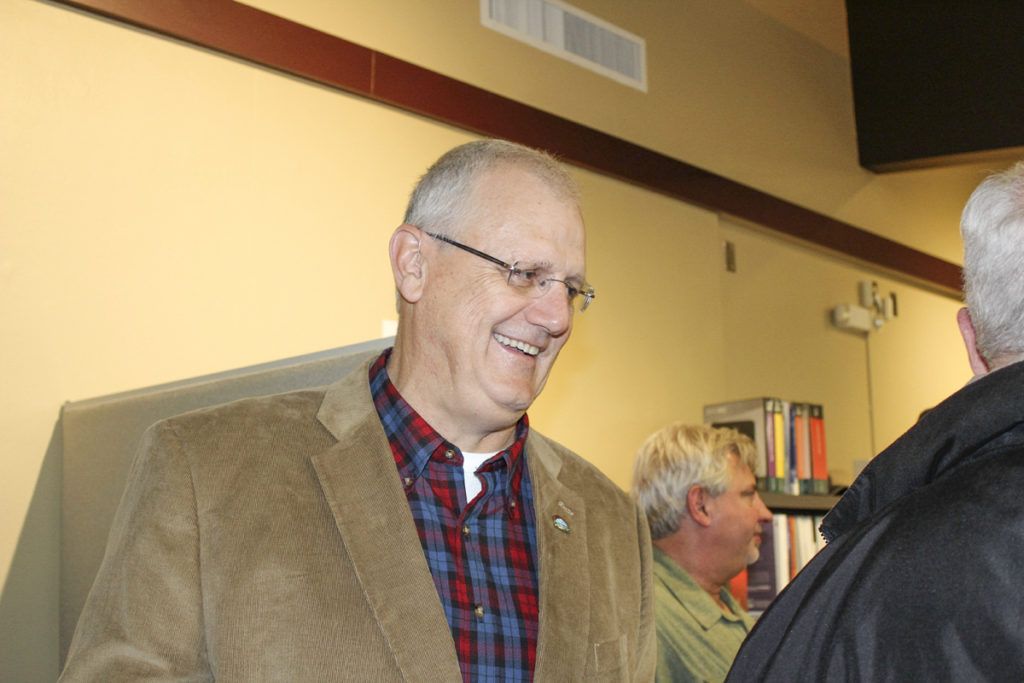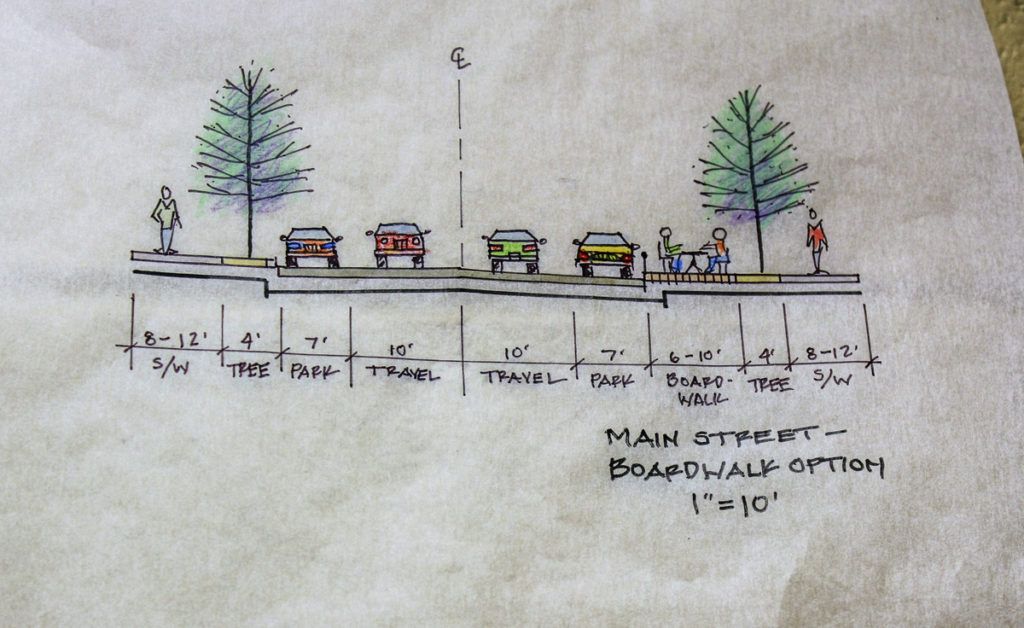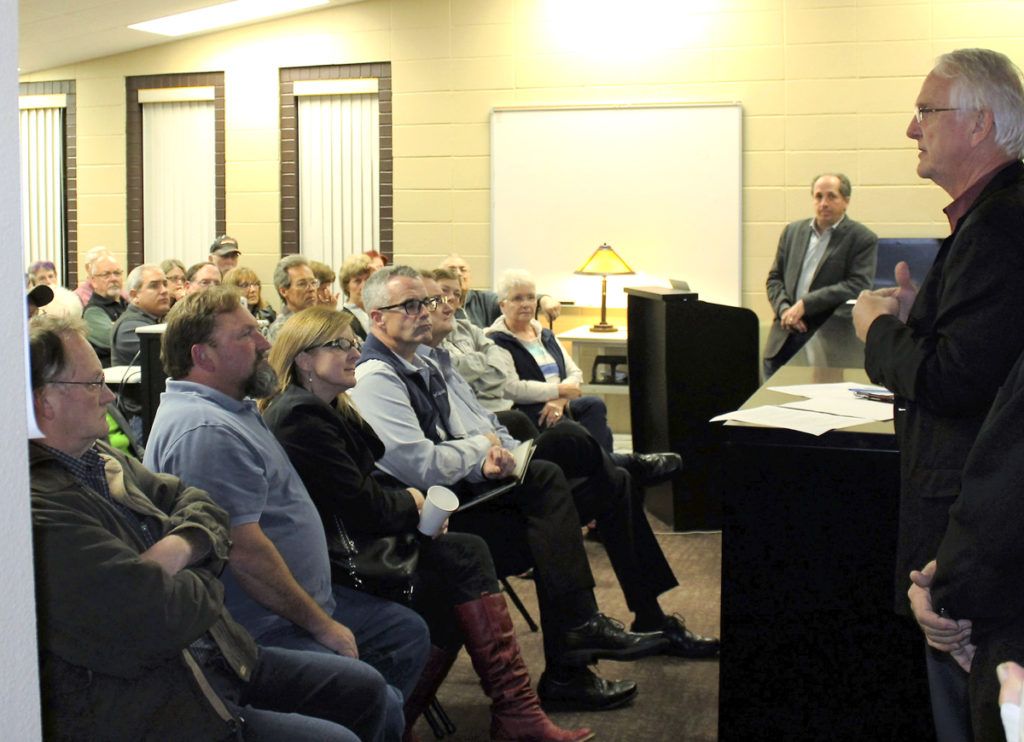LA CENTER — It was standing room only at the La Center Public Works building Monday night, Nov. 7, when about 80 community members squeezed into a small presentation room to hear what planners had imagined for the area known as the La Center Junction.
Located directly east of La Center’s exit off Interstate 5, the 205-acre Junction could be La Center’s key to future economic stability – most of the land is zoned for commercial and light industrial uses, the Cowlitz Indian Tribe has paid to expand the city’s sewer lines to the Junction and, in April of 2017, the tribe will open its mega-casino on reservation land adjacent to the Junction on the west side of I-5 and could an additional 4.5 million people to the sleepy highway interchange each year.

If all goes according to plan, La Center leaders say they’d like to see the Junction develop into a mixed-use commercial/residential/light-industrial area that would provide jobs for La Center residents, take advantage of the new crowds coming to the Cowlitz tribe’s ilani casino-resort and help draw visitors into the small city’s historic downtown core.

To do this, the city had to first put a moratorium on development at the Junction and come up with a plan. Without some sort of design guidelines, the city was in danger of having the Junction turn into, as one planner present at the Nov. 7 meeting put it, “just another exit off the highway.”
In September, La Center city councilors approved a $100,000 expense to hire designers and planners to study the Junction and come up with some preliminary design concepts. The first phase of the design process involved an intensive, four-day “charrette” that brought designers, planners, city leaders, citizens and other stakeholders together to figure out a framework for what the Junction could someday become.
On Nov. 7, these stakeholders met with interested community members to show what they’d come up with.
“The question is, ‘How do we make an economic area that is symbiotic with the casino and with the town of La Center?’” said Eric Eisemann, the city’s consulting planner. “One of our goals was to tie this area together with the wonderful town … and to generate more flexibility to allow a variety of uses to come in [to the Junction].”
The planners looked to La Center’s architectural history, incorporated views of Mount St. Helens and Mt. Adams into their designs, and came up with a mixed-use model that would bring people off the highway, into the Junction, and out of their cars.
“This is the gateway to La Center and we wanted to make a new Main Street,” Eisemann said.
Instead of creating a strip mall type of development or looking to big box stores that come with big-box sized parking lots, the preliminary design concepts call for slowed traffic, two traffic signals to help pedestrians navigate across La Center Road – a busy thoroughfare running from I-5 into La Center’s historic downtown – a green commons area, and landscaped, pedestrian-friendly sidewalks that front a mix of retail shops, restaurants, cafes and other commercial ventures.
City leaders hope a mixed-use development at the Junction would help draw visitors into La Center’s downtown area, which is located a few miles away from the main highway and has been dominated by private card rooms since the 1980s. On Nov. 7, however, some community members voiced concerns that the city was focusing on the Junction and ignoring the historic downtown.
But Eisemann said the city feels an urgency to get design guidelines in place for the Junction now that the Cowlitz casino is nearing completion and that doesn’t mean La Center leaders are ignoring the city’s historic downtown.
“Over the past several years, the city has been working on design plans for the downtown,” Eisemann told the crowd at Monday night’s meeting. “Right now, there are not enough people coming into the downtown, so we want this [the Junction] to help feed people into the downtown and to have a synergy with [historic] La Center.”

Eisemann cautioned that, without a plan for the Junction, the area could easily turn into a “standard highway strip mall.”
“We can push La Center to the Junction, instead of the highway spilling out into La Center,” he said.
The planners added that the new Junction designs are not meant to compete with the types of restaurants and retailers going into the new mega-casino complex west off the highway.
“We’ve been working with planners at the casino not to compete,” Eisemann said.
There is still a lot of work to be done on the Junction, the planner said, but the charrette process has helped narrow down what city leaders and community members want to see. Soon, an economic study into the types of business mix – commercial, light industrial, office space, big box retailers, restaurants, small retail, etc. – will be completed and city leaders will have a better idea of how to market the area to potential developers.
For people who are interested in helping La Center shape the future look and design at the Junction, Mayor Greg Thornton suggests taking part in the city’s planning commission meetings.
“Now that this part is done, the next steps will come through the planning commission,” Thornton said.




